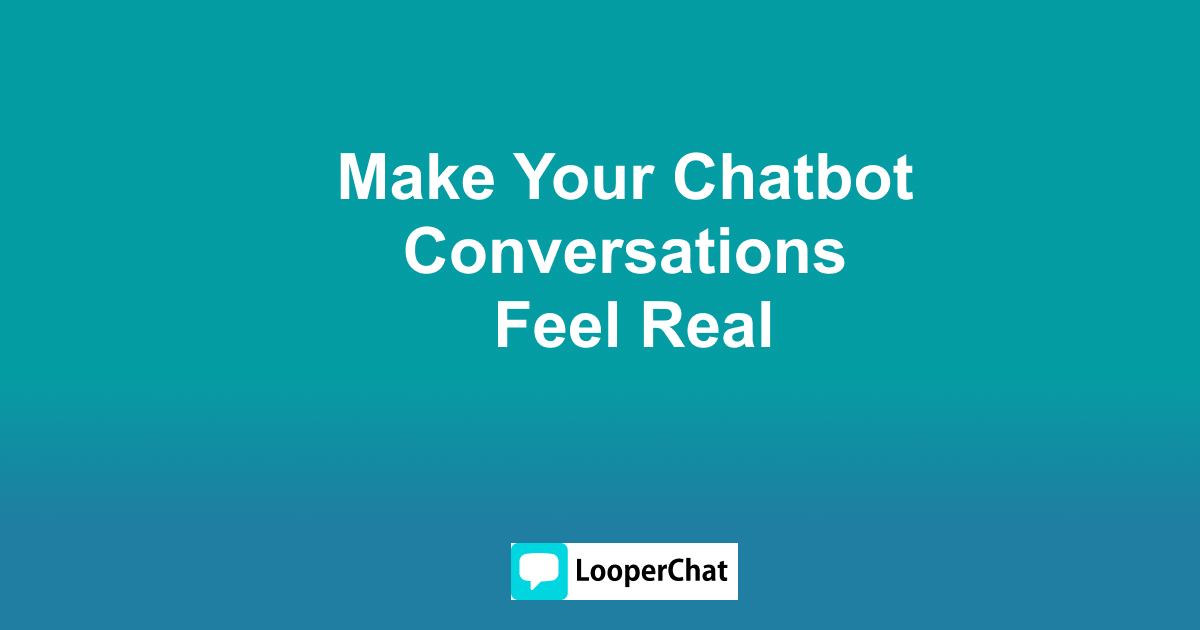Make Your Chatbot Conversations Feel Real
LooperChat

We've all experienced it: a frustrating bot conversation that feels more like an answering machine than a helpful guide. If you’re building or managing a chatbot, you don’t want your customers to feel that way. You want them to feel understood, supported, and confident in your brand.
Here’s how to ensure your AI chatbot talks to customers like a real human with clarity, empathy, and purpose.
1. Drop the robotic language
People don’t talk like scripts, so your chatbot shouldn’t either. Avoid phrases that sound stiff or overly formal.
For example:
“Your request has been processed. Is there anything else I can assist you with today?”
Instead, try:
“Got it! Anything else I can help with?”
Small tweaks like contractions, casual phrasing, and natural sentence flow make interactions warmer and easier to read.
2. Always acknowledge emotions
Even if your chatbot can’t feel emotions, it can still recognise them. When a user expresses frustration or urgency, acknowledge it before providing solutions:
“I’m sorry this is taking longer than expected. Let me find that for you right away.”
A simple line like this reassures customers that they’re heard, not ignored.
3. Keep responses short and actionable
When people use chatbots, they’re often on their phone or multitasking. Long paragraphs or unnecessary filler get in the way. Aim for responses that are:
- Clear: state exactly what you’re doing or need from them.
- Concise: no filler or repeated phrases.
- Action-oriented: direct the user to their next step quickly.
For example:
“Your order has shipped! You can track it here.”
Instead of:
“We’re pleased to inform you that your order has now been shipped and is on its way to you. You can check the tracking details at the following link if you wish to see the progress of your delivery.”
4. Use the customer’s name (when it makes sense)
People respond better when addressed personally. If your chatbot can pull user names securely, use them naturally in conversation. Just don’t overdo it, nobody talks to their friend by saying their name in every sentence.
5. Be upfront about limitations
Chatbots are powerful, but they can’t do everything. If your bot hits a limitation, be honest and guide the customer to human support without pretending:
“I wish I could help with that, but I’m not able to process cancellations. Let me connect you with our team.”
6. End with clarity
Always end interactions with a clear closing or an open-ended question if the chat is ongoing:
“Happy to help. Let me know if there’s anything else you need.”
This signals the conversation status and prevents confusion about what happens next.
Final Thoughts
Talking to customers as a chatbot isn’t about tricking them into thinking you’re human. It’s about communicating with the same care, clarity, and empathy that a great human support agent would.
At LooperChat, we believe that AI conversations should feel natural, not mechanical.